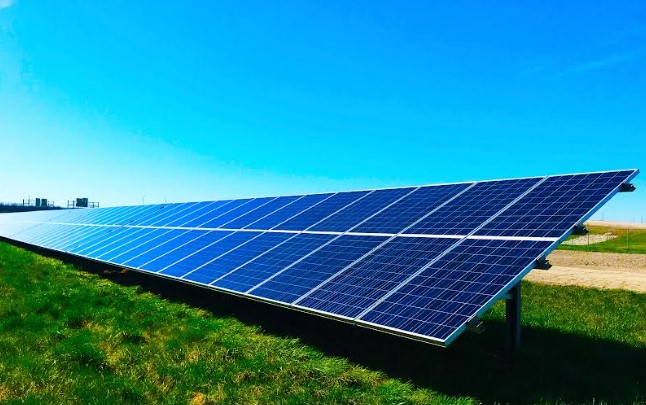Find the best Solar Module for your home and make life easy
With an incredible improvement in solar panel technology, the market is flooded with a wide range of innovative solar panels. However, there are two major conventional solar module choices that you are most likely to get – monocrystalline and polycrystalline solar modules. Although both these types of solar panels are used to produce energy from the sun yet they are different from one another.
Now, are you planning to install a solar power system at your home or office? If so, solarmodule monokristallin oder polykristallin, which is a better option? Confused? Well, do not stress yourself! Here in this blog, we will do an in-depth discussion of both monocrystalline and polycrystalline solar modules and you will know best Solar Module to choose
Overview of Monocrystalline and Polycrystalline Solar Panels
Both monocrystalline and polycrystalline solar panels are solar energy receptors. Just like the cells in a boot batterie, these silicon-based solar modules are designed to generate electricity. Both the modules serve the same function in your solar photovoltaic (PV) system, that is, they harness the energy from the sun and convert it into electricity. However, the performance and appearance of these solar panels are affected based on their crystalline silicon structure. In fact, the panel type can be easily identified by looking at the shape and color of its solar cells in the best Solar Module .
Monocrystalline Solar Modules
As the term implies, a monocrystalline solar module is made up of a single silicon crystal, formed into a cylindrical ingot. Characterized by round-edged black PV cells, these solar modules are more efficient in producing electricity than polycrystalline solar panels. Due to their sleeker aesthetics and higher conversion efficiencies, they are ideally installed in homes and offices that have limited space.
Polycrystalline Solar Modules
Also known as “multi-crystalline” or many-crystal silicon, these solar modules come with blue-hued PV cells and straight edges. Just like monocrystalline solar modules, polycrystalline solar modules are also made up of silicon. However, while monocrystalline solar modules are made of a single silicon crystal, polycrystalline solar panels are made by melting many fragments of silicon together. Now, talking about energy-producing efficiency, polycrystalline solar modules have lower conversion efficiency than monocrystalline solar modules.
Key Differences Between Monocrystalline and Polycrystalline Solar Panels
Now that you have a brief overview of monocrystalline and monocrystalline solar panels, let’s have a look at the most important differences between the two.
Appearance
The aesthetical difference between both the solar modules lies in their colors. Monocrystalline solar panels are usually black whereas polycrystalline solar modules can have a blue hue to them.
Energy Conversion Efficiency
As already mentioned, monocrystalline solar modules have a higher conversion efficiency than polycrystalline solar modules. Well, this does not mean that polycrystalline solar modules are poor-quality products. Please note that the market has high-quality solar panels of both types.
It’s just that monocrystalline panels are made from a single silicon crystal and thus the electrons have more room to move while generating electricity. While sometimes monocrystalline solar panels can reach efficiencies of over 23%, polycrystalline solar modules generally top out below 20%.
Cost
Basically, silicon structure is the primitive factor that determines the cost of both the solar modules. The cost of polycrystalline panels is much less than monocrystalline panels. That’s because their manufacturing process is simpler. They are produced by placing molten silicon into square molds and then cutting the wafers into individual solar cells. On the contrary, producing monocrystalline panels requires manufacturers to have control over the solidification of silicon. This complex procedure makes the production of single-crystal solar modules expensive.
Although polycrystalline panels cost lesser than monocrystalline panels, the cost of inverters, electrical protections, wiring, racking, and labor remains the same for both solar panels. Also, both types of solar modules are eligible for the federal solar tax credit.
Lifespan
The lifespan of the solar panels does not depend on the type of silicon cell that makes up the solar modules. Be it solarmodule monokristallin oder polykristallin, you can expect the panels to produce electricity efficiently for 25 years and more.
Temperature Coefficient
Temperature coefficient basically refers to a measure that reveals how well a solar panel performs in warm temperatures. Just like energy conversion efficiency, monocrystalline solar panels are known to perform better than polycrystalline panels in terms of temperature coefficient. Considering that percentages closer to zero are better, monocrystalline solar modules have a better track record in high temperatures.
Choose the Right Solar Panel!
Now that you have read the entire blog, you know everything about monocrystalline and polycrystalline solar panels. Perhaps you must be looking to install a solar panel system at your home to save energy costs. But, choosing the right solar panels can further benefit you in other ways.
Whether it’s solarmodule monokristallin oder polykristallin, always choose one that best suits your personal preferences, space constraints, and budget. Remember, your home deserves the best solar technology. Thus, thoroughly research both monocrystalline and polycrystalline solar panels as well as other choices to make the right decision for your home.
